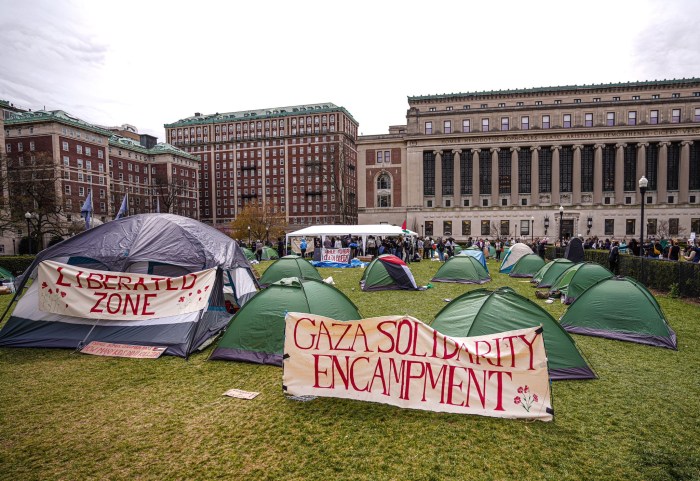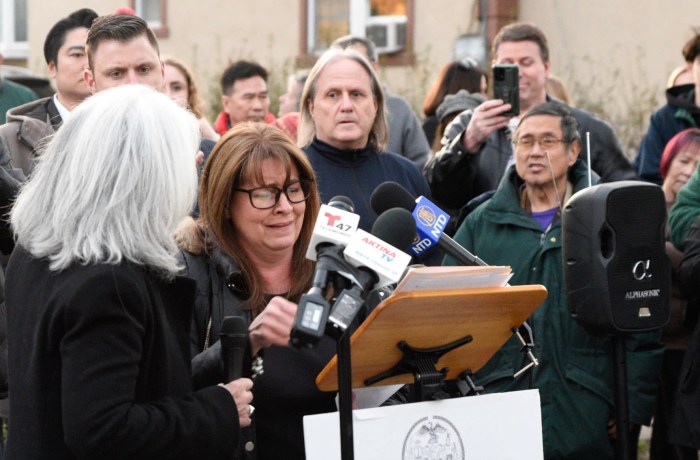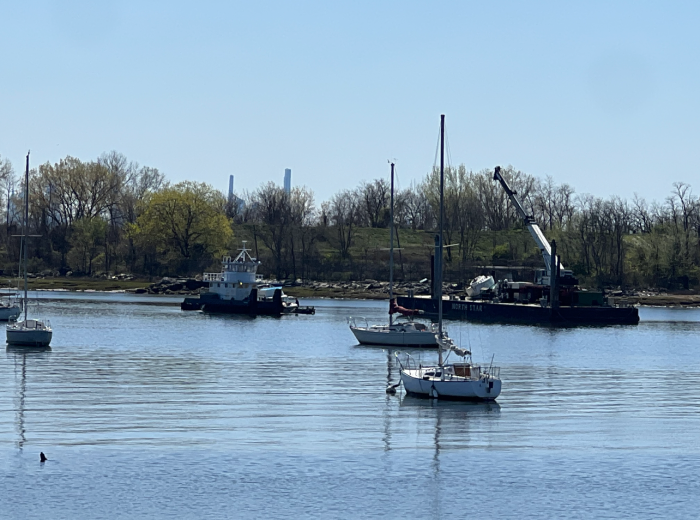
Chelsea block associations want to ensure that this summer’s marquee Pride celebration causes minimal disruption, should it again march through their community.
Organizers of the Pride march, which would repeat last year’s trek, are waiting for formal approval of their permit application. In 2018 the march abandoned its former path down Fifth Avenue and into Greenwich Village, instead departing from Seventh Avenue and 16th Street and heading up Fifth Avenue to 29th Street — a route designed to accommodate tens of thousands of additional participants on the 50th anniversary of the Stonewall riots , including those drawn by the city’s being designated the destination for WorldPride.
Chelsea residents say if the event returns, organizers should address their concerns about using side streets as staging areas.
“We respect the LGBTQ+ community’s desire to celebrate this momentous year in their history,” said Paul Groncki, president of the 100 West 16th Street Block Association, “but we are concerned about the impact of the parade on people who live and work here . . . We wish they would talk to the community, rather than just dropping in and assuming whatever it is they want, they’re going to get.”

James Fallarino, media director for march organizers Heritage of Pride (HOP), said 322 groups have registered for the march. A total of about 70,920 people are expected to join in on June 30, 40,000 more than last year, according to Fallarino.
To accommodate the larger crowd, HOP’s 2019 permit application requested more square footage for the formation area, which last year spanned the area bounded by 15th and 19th streets and Sixth to Ninth or Seventh to Ninth avenues. When asked for specific side street information, Fallarino said, “I haven’t seen the permit.”
Fallarino said HOP would contact the block association and other community groups when it knew more about Pride plans.
“We literally don’t know which blocks the city is going to give us for the staging areas,” Fallarino said. “We had hoped to have it by now. The sooner we get it, the better, because we can start doing this important work with the community, which will be impacted by the formation area.”
The mayor’s office did not respond to a request for the status of HOP’s permit application.
Another event, the Queer Liberation March and Rally, planned by the Reclaim Pride Coalition (RPC) to coincide with the HOP event, would begin in Sheridan Square, come up Sixth Avenue and conclude at Central Park, according to RPC representative Ann Northrop.
“There are no speakers, no performers, no stage,” Northrop said of a march that eschews floats and corporate sponsors while aiming its focus on social justice and human rights ethos. "We have no desire to clog side streets, or have people standing around for hours.”
RPC, anticipating possible approval of its route by the city, has accepted an invitation to attend the Council of Chelsea Block Associations meeting later this month, according to Northrop.
“We would be thrilled to talk to anyone in the community and are entirely open to suggestions,” she said.
Bill Borock, president of the Council of Chelsea Block Associations, said he would reach out to HOP with a similar invitation.
Council Speaker Corey Johnson, who represents Chelsea and Greenwich Village, views HOP’s 2018 route as poorly designed, according to his chief of staff, Erik Bottcher.
“The Speaker believes last year’s route was ill-conceived, and he is advocating for a more appropriate staging location for this year’s very important march," Bottcher said.
Ahead of the 2018 march, Groncki said HOP assured the community that streets used for staging areas would be empty by late afternoon or early evening, and amplified noise would be, more or less, limited to sound checks.
“It was just oppressively loud, all day long,” Groncki said. “The music and shouting didn’t stop, and they were on those blocks until 7 or 8 in the evening.”
When the event concluded, portable toilets were left behind for several days, and police barricades remained in place for a month, according to Groncki and Fallarino.
Fallarino said HOP reflected on "lessons learned," and would correct issues, should the march return to Chelsea.
"We don’t want that to happen again," Fallarino said. "We want to make sure that when we end the march, all remnants of it are gone by the next day.”
That daylong population explosion helped many local businesses, but hindered walk-in traffic at some shops.
“It was amazing,” said Luis Quintero, co-owner of El Cocotero, a Venezuelan restaurant on 18th Street, one of last year’s staging areas.
Calling the crowd “very civil and properly behaved,” Quintero said business increased about 40 percent during Pride weekend. On the day of the march, people “started gathering early, and eating early.”
On Seventh Avenue near 16th Street, Mattress Firm manager Andrew Traynor recalled, “The store didn’t make a dime that day, because no one came in. The only people on the block were walking by or watching it.”
Still, Traynor said, “It is what it is. It’s New York City. It comes with the territory.”
Correction: A prior version of this article inaccurately described the formation area used in 2018, which included the area bounded by 15th and 19th streets and Seventh and Ninth avenues.

















